Manpho’s Unha Chemical Complex: Active Expansion and Evidence of Increased Production
Commercial satellite imagery from April 4, 2021 to September 6, 2023 reveals that the Manpho Unha Chemical Complex continues modernizing and expanding its facilities while showing evidence of increased reagent production.
Manpho’s Unha Chemical Complex holds considerable strategic importance to North Korea. A declassified 1980 Central Intelligence Agency (CIA) report has linked Unha with the production of liquid rocket propellant and other chemical products needed to support North Korea’s demanding strategic industries. This includes reagents required for the processing of nuclear materials.
The connection between Unha and the Yongbyon Nuclear Scientific Research Center, however, was only recently confirmed in a Beyond Parallel study released in March 2023. Based on commercial satellite imagery, three specialized railcars used to transport reagents have been shuttling between these two locations. Unha is believed to produce nitric and sulfuric acid, as well as other reagents associated with reprocessing, enrichment and conversion of nuclear materials. For example, nitric acid is instrumental in converting yellowcake U3O8 into uranium dioxide UO2 and dissolving spent full for plutonium extraction. To date, no other facility has been identified as a source of these reagents to Yongbyon, underscoring Unha’s importance to North Korea’s nuclear weapons program.
Manpho Unha Chemical Complex
The Unha Chemical Complex is located inland south of the city of Manpho. The complex is divided into two areas: one for housing and amenities for the plant’s workers, and one for chemical production and storage. Each area is controlled by separate security gates.
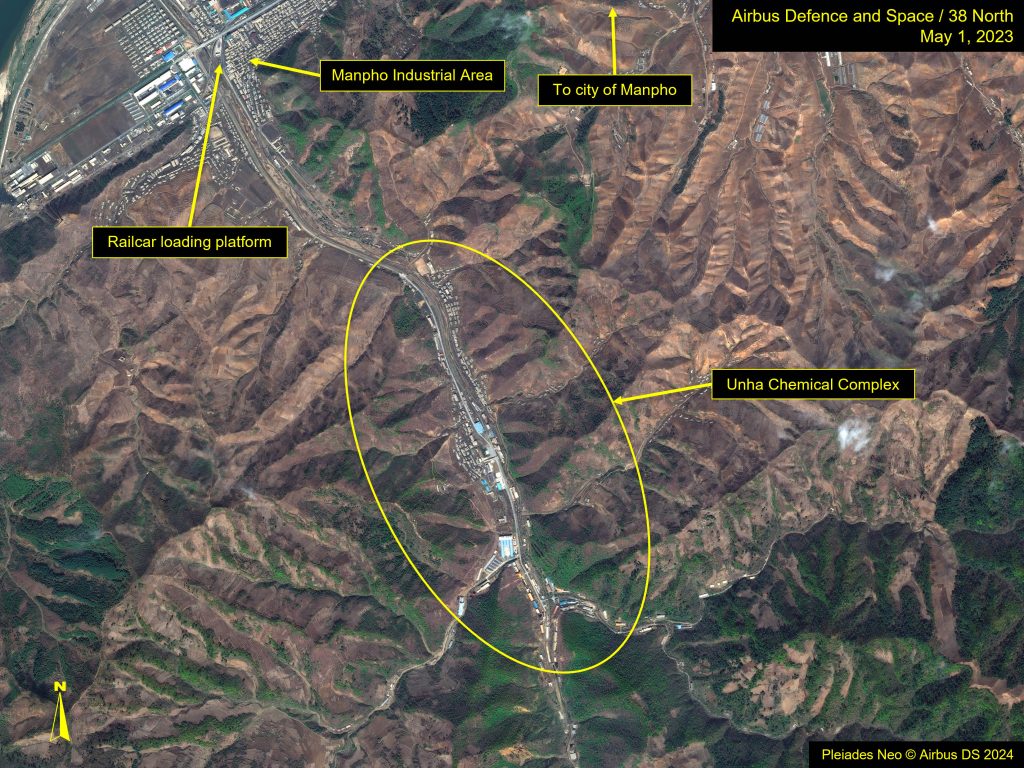
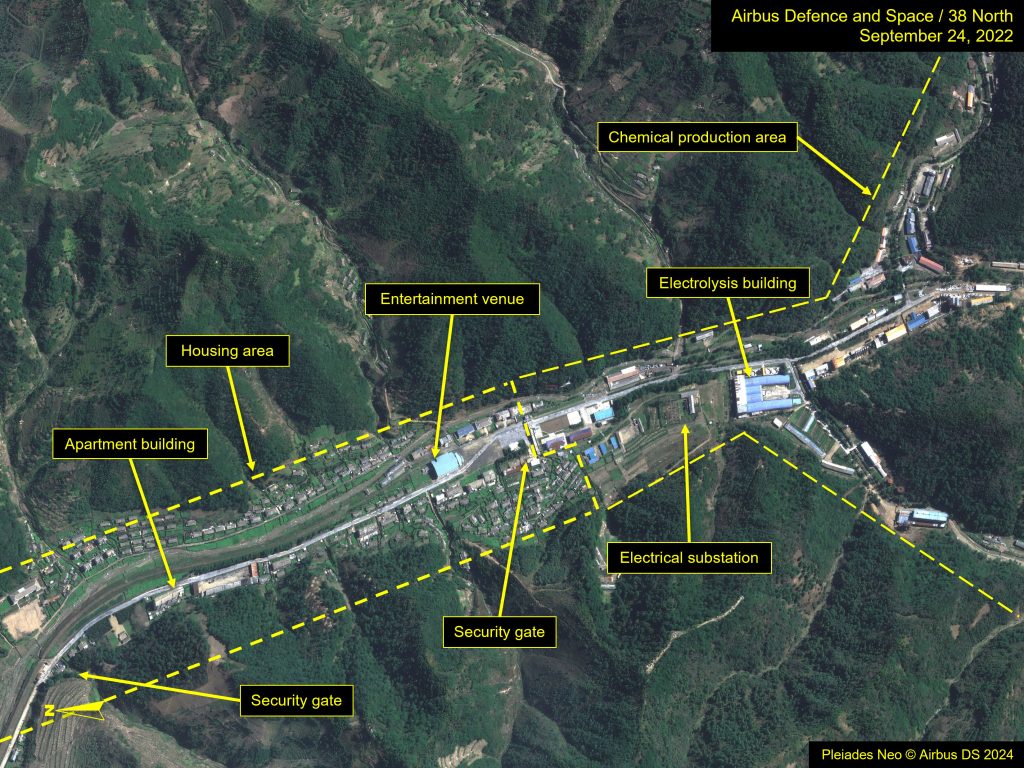
The Unha complex is served by both road and rail, which begin near the tire factory located near the Yalu River and terminate inside the Unha complex at a point where two smaller streams join the central creek. As part of the modernization program that began after 2007, the main road within the secured areas of the complex (approximately two kilometers) was resurfaced, making it easily distinguishable from the surrounding dirt roads and main road running to the complex, thus allowing for easy delineation of the complex’s boundaries.
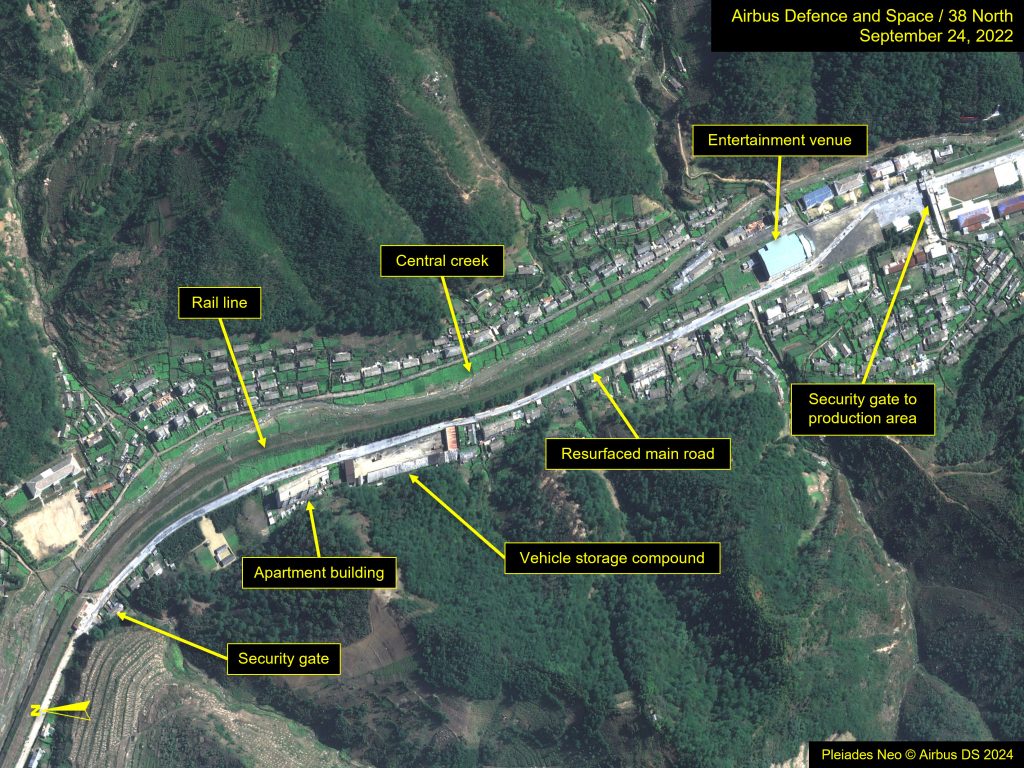
The rail line is a single track, although, within the complex, there are two small marshaling yards, one at its terminus, where train sets can pass each other.[1]
Inside the plant complex, the roadway branches in three directions following adjoining riverbeds, which meet just south of a large electrolysis building. Separate production plants can be found along each roadway, as well as a number of revetted storage buildings located at the southern end of the south branch. While the contents of these storage buildings are uncertain, the surrounding protective berms suggest they are highly volatile, such as ingredients for rocket propellent.
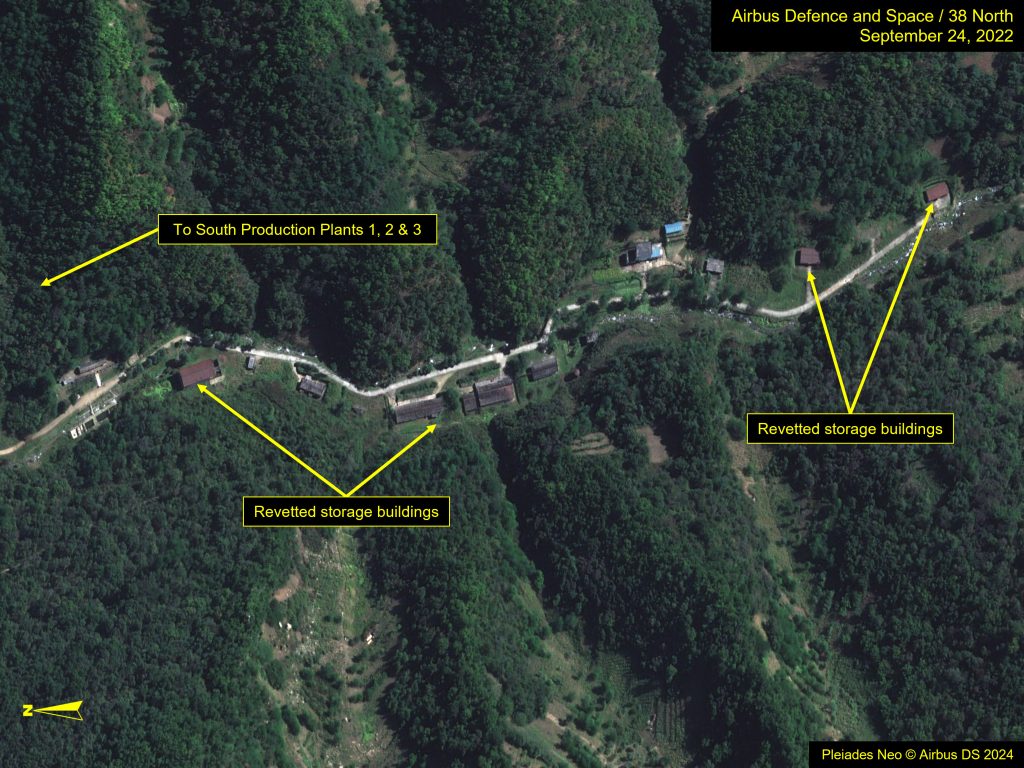
The March 2023 CSIS report calls out five production plants. For the purposes of this report, we provide a naming convention based on their locations within these valleys: the East Production Plant (13), the West Production Plant (4), and South Production Plants 1 (5), 2 (7), and 3 (8).
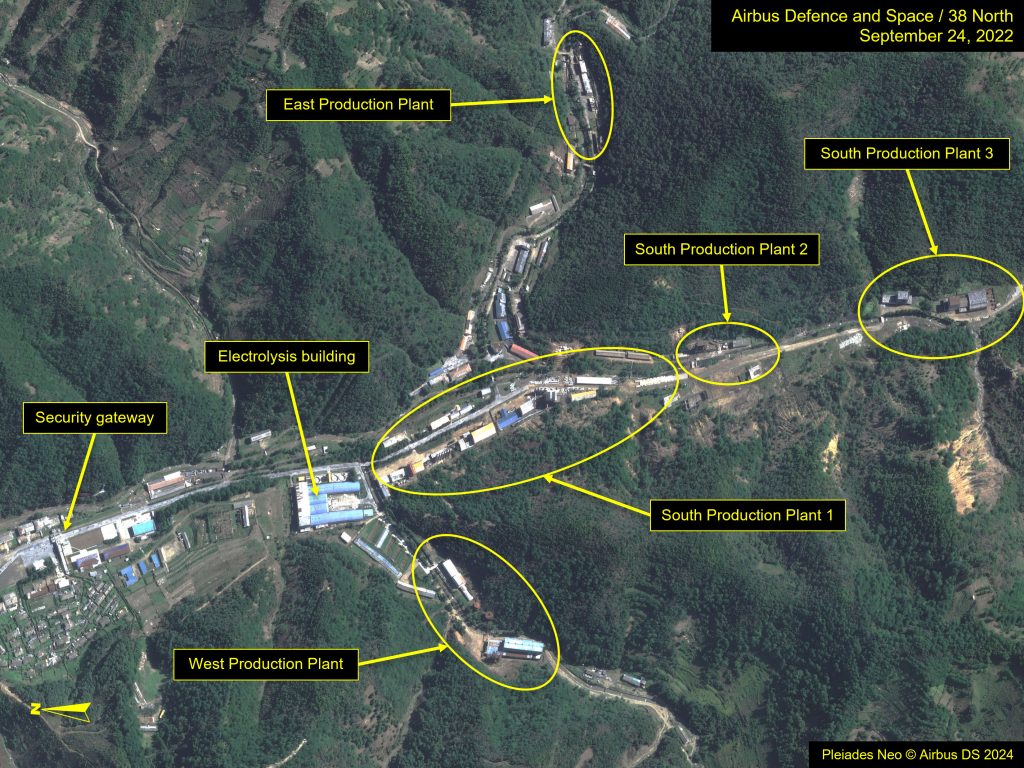
Once inside the complex, the road and rail line has numerous apartments and amenities, such as an entertainment venue within the workers’ housing area, several support and storage buildings, and an administrative complex within the production area. A large electrical substation services the complex.
The centerpiece in the production area is a large electrolysis building, identified in a 1980 declassified CIA report. The report further states that the complex was likely producing highly concentrated hydrogen peroxide, used as a propellant oxidizer in missiles, through the electrolysis of sulfuric acid or potassium persulfate.[2] The original building was present in 2005 and consisted of four adjoining halls, with a probable engineering/administrative building connecting the four halls at their northern end. Between 2007 and 2012, the building underwent major renovations. The most visible was the razing of the southern two-thirds of the two center halls and replaced with a courtyard, providing a U-shape appearance from above.
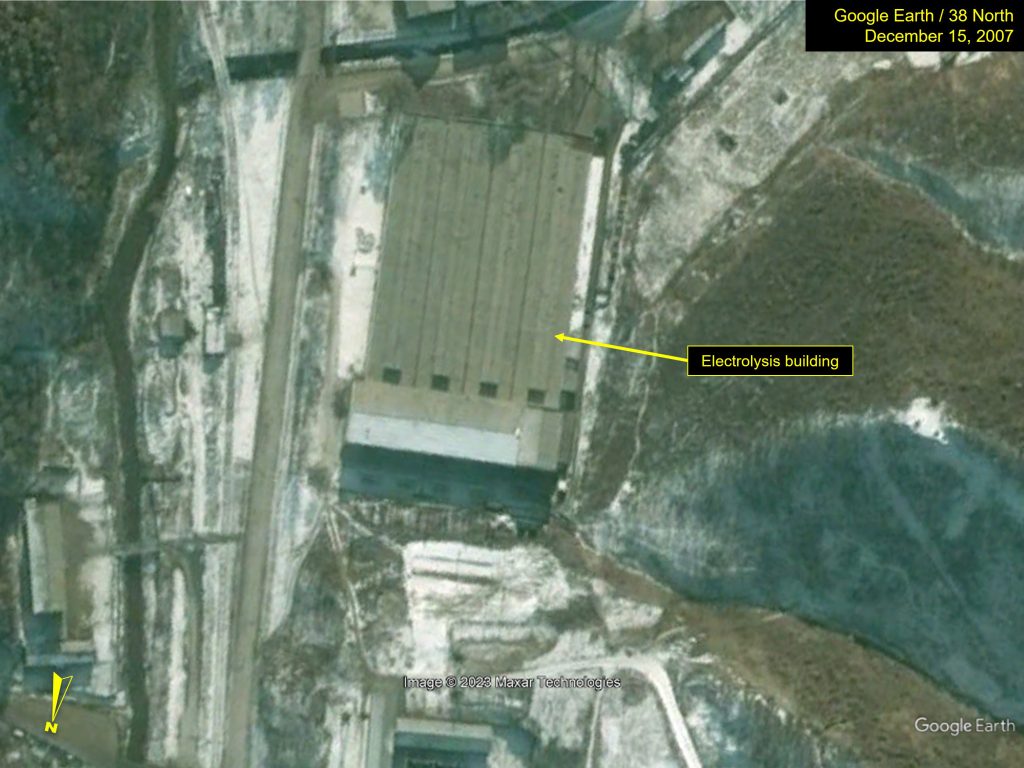
In September 2010, North Korean media showed Kim Jong Il visiting the electrolysis building, where he gave praise and guidance toward the completion of Unha’s modernization.
Following Kim’s visit, few changes to the building were observed until September 21, 2016, when a row of five large and four small settling tanks had been added along its north side. These were never enclosed by a roof but rather had an arched, translucent plastic covering placed over them. It is unclear how these tanks fit in with the ongoing plant operations, but by April 4, 2021, portions of the covering had been removed, exposing the five larger tanks that all appeared to be empty. This remained the case through October 2023, raising questions about the building’s operational status.
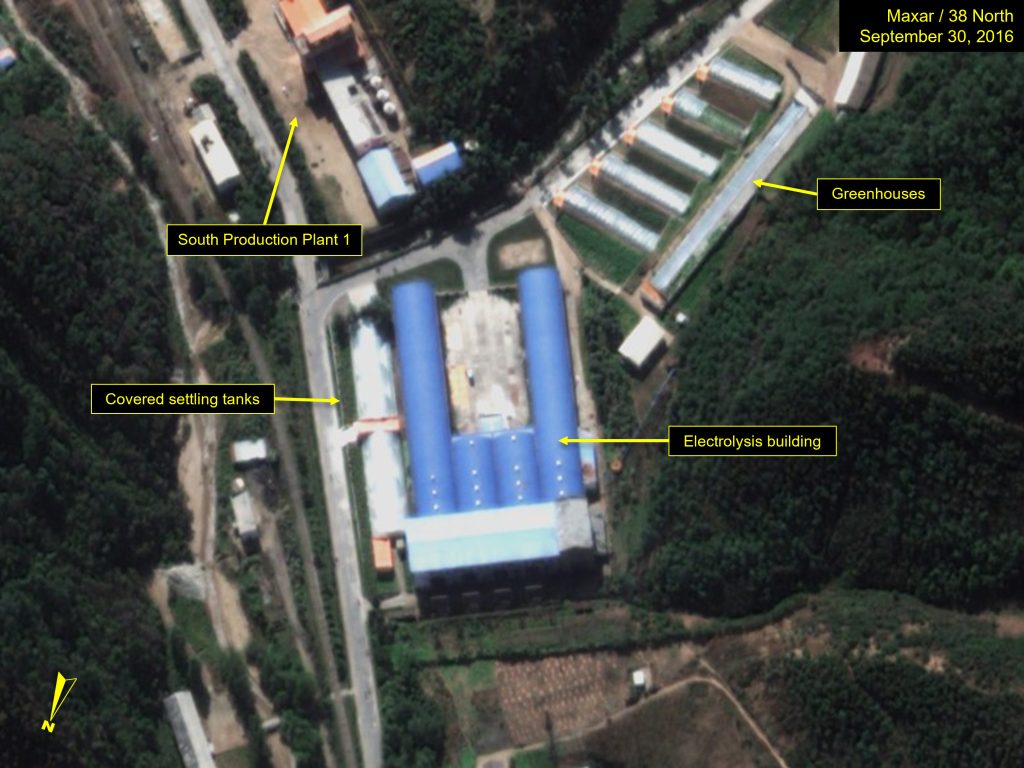
Around the time when the tanks were uncovered, a small building was constructed at the southeastern end of the electrolysis building, where a series of three monuments were erected. A bright blue roof was installed by April 2021, but the building was razed by May 2023.
While these changes occurred, beautification and security efforts continued, including the addition of a wall along the western side of the electrolysis building.
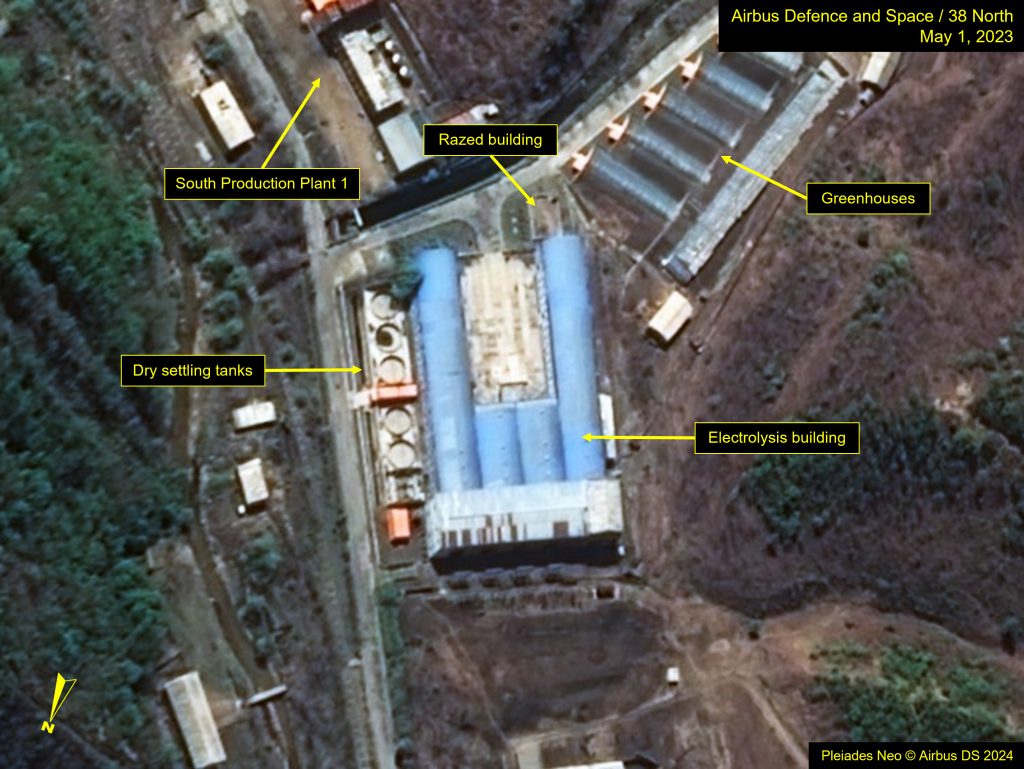
The West Production Plant appears to be operational, although signs of activity have been minimal. This plant consists of two large buildings located on opposite sides of the south creek. The building on the north side of the creek connects to two storage tanks on the creek’s south side. Those tanks also service the electrolysis building, as evidenced by a connecting pipe.
Damage to the riverbed and possibly to the interior of the north building was caused by rising waters during the typhoon season of 2021. Imagery of September 24, 2022 showed the creek’s banks to be walled to prevent future flooding of the adjacent areas.
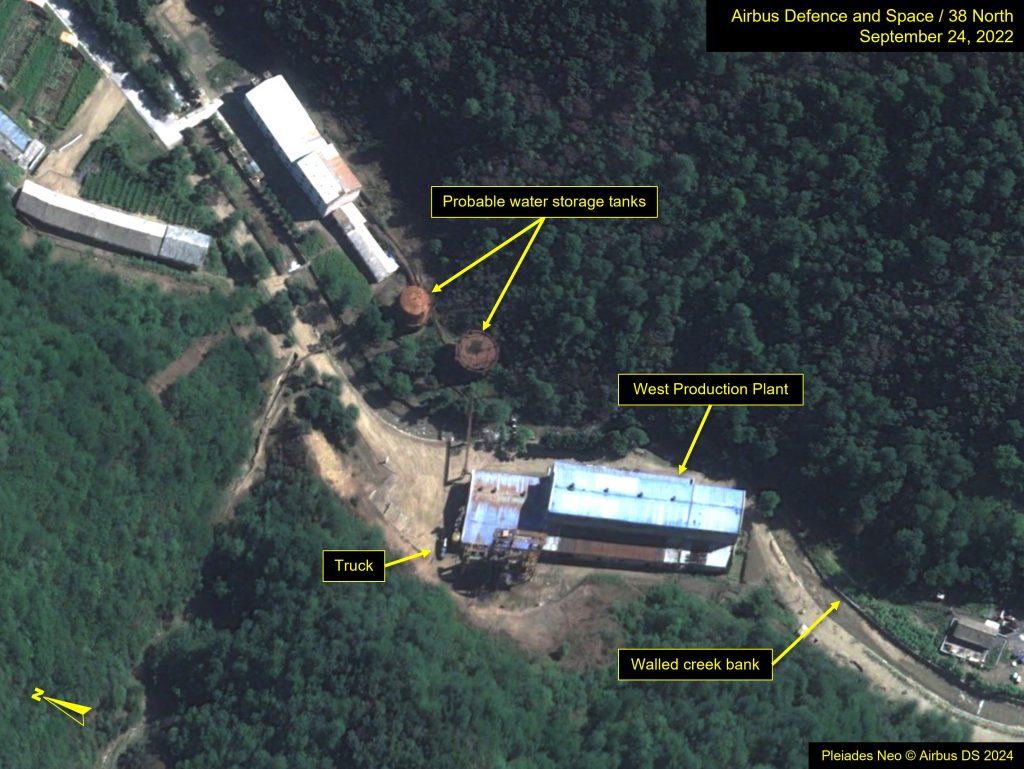
Less can be determined regarding the operational status of the East Production Plant. The plant consists of two large buildings positioned in tandem, a small building at its eastern end, and a series of five absorption towers at the western end. All are connected by exterior piping. Absorption towers are associated with the production of certain reagents, such as nitric and sulfuric acids. While the plant has maintained a clean and neat exterior appearance, aside from a few personnel walking about on imagery from September 2022, no other recent activity has been observed at the plant or in the immediate vicinity.
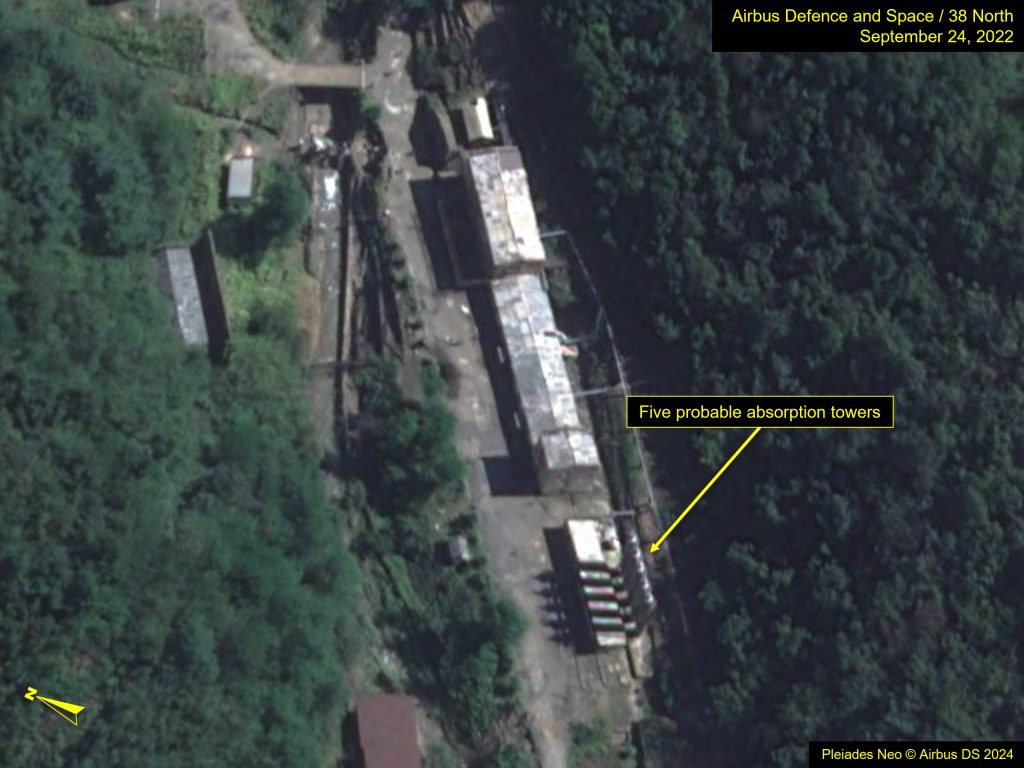
The South Production Plants 2 and 3 have shown little signs of activity over the past five years. However, in September 2022, two sizes of liquid storage casks appeared at Plant 3. Six of the larger were arranged along the road next to the plant building, while tens of the smaller casks were arranged in open storage just south of the plant. The reason for their placement here may have little to do with this plant’s active status but rather reflect overflow from the activity at South Production Plant 1. Imagery from September 6 revealed the presence of 12 footers for column supports that will likely become a storage shed.
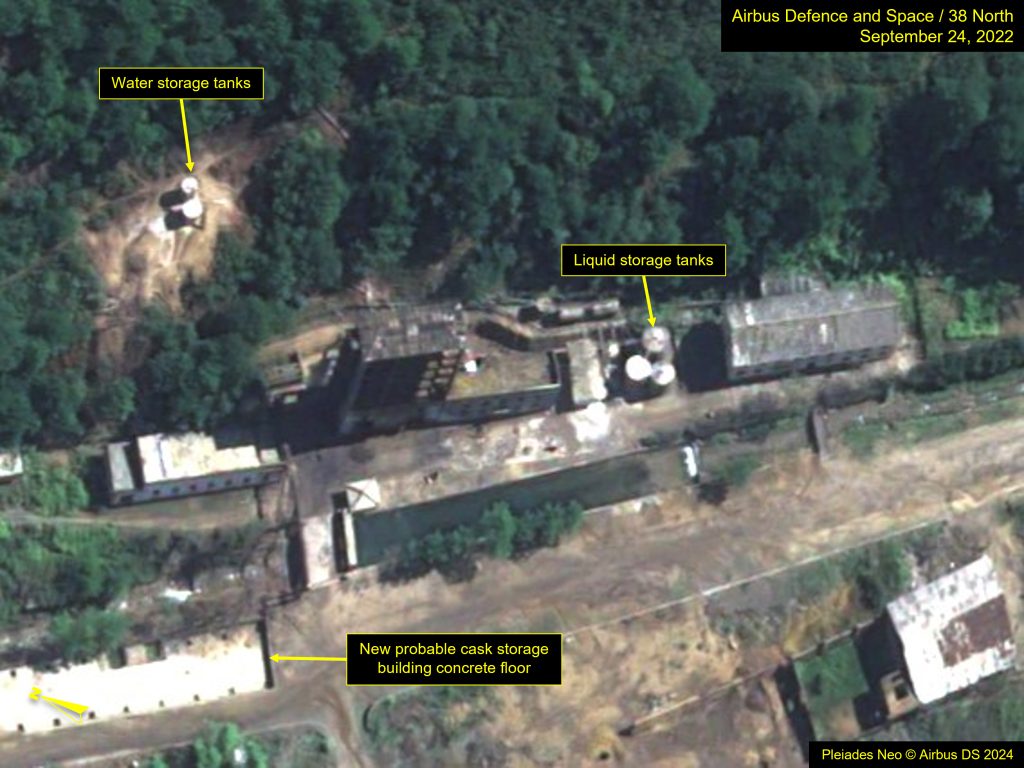
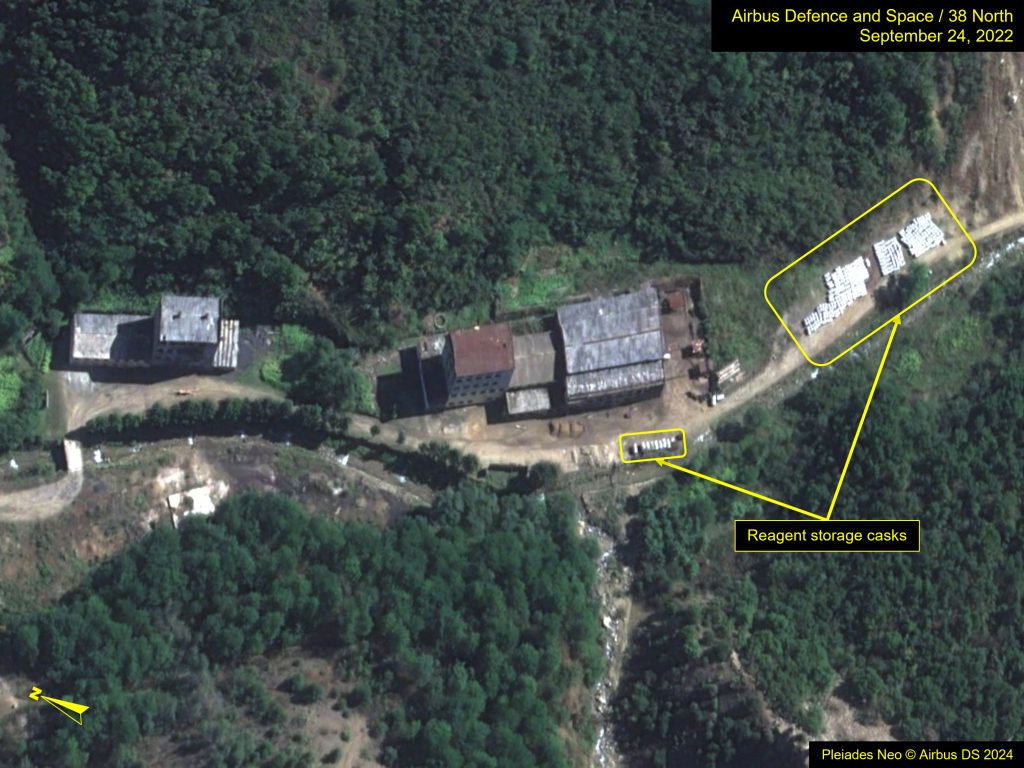
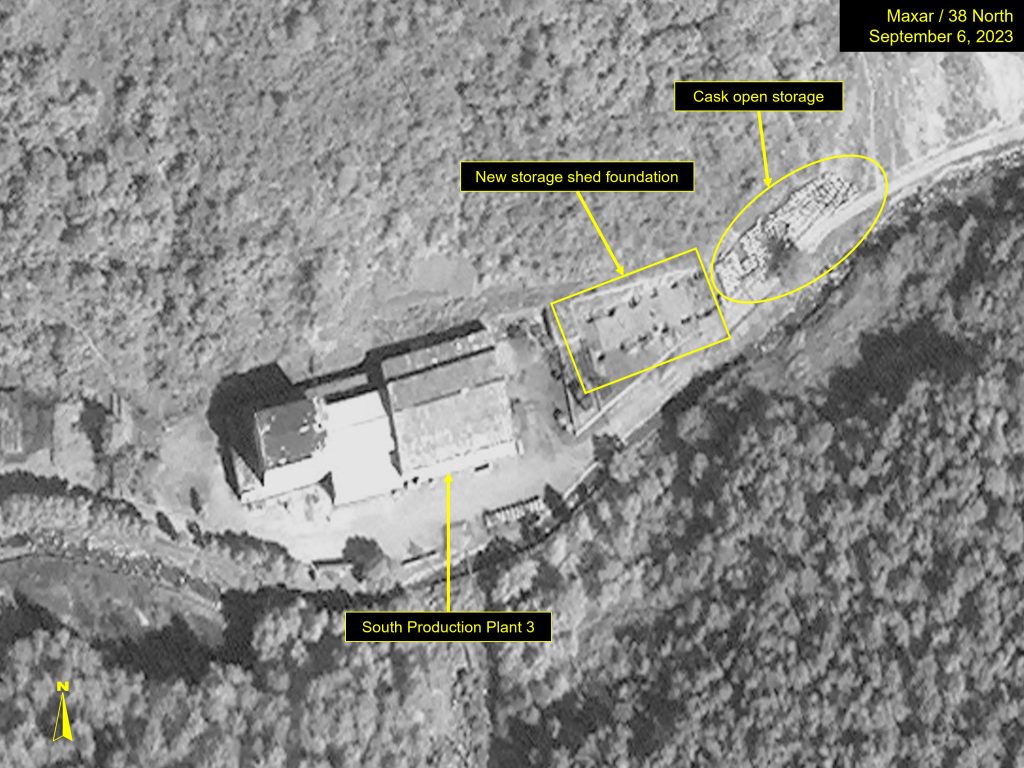
The South Production Plant 1 has been by far the most active of the production plants. The plant is comprised of two large buildings in a tandem arrangement, with several smaller buildings located at either end. While the number of buildings has changed only slightly since November 16, 2018, the removal of two of the previously eight vertical absorption towers located to the north of the larger buildings and the addition of two vertical storage tanks to the south building (now four), suggest ongoing modernization and expansion of this plant. Like the East Production Plant, the presence of the absorption towers suggests the product produced is an acid reagent.
In addition to these changes and the renovation of a storage building immediately to the south, the presence of white, probably plastic, casks used for the handling and movement of reagents has also grown exponentially since 2018. Going back to September 2016, dozens of these casks could be seen near the south building where the rail tracks terminate and where the specialized railcars associated with the transfer of reagents to Yongbyon have appeared from time to time. By 2021, the number of casks had grown to the hundreds, and the foundation and framework for a linear storage building for these casks were present. The building’s foundation measured 8 by 70 meters. By September 2022, the number of casks had grown even larger. The new storage building was complete, and the foundation of yet another, measuring 12 by 90 meters, was observed south of the first. As of October 2023, no further progress has been made on the second building.
In that image, several casks had been moved into the first storage building, and others lined the road in neat stacks. Just south of South Production Plant 3, an area for open storage of additional casks was present. Imagery from September 2023 showed the foundation laid for a third storage shed on the south side of Plant 3.
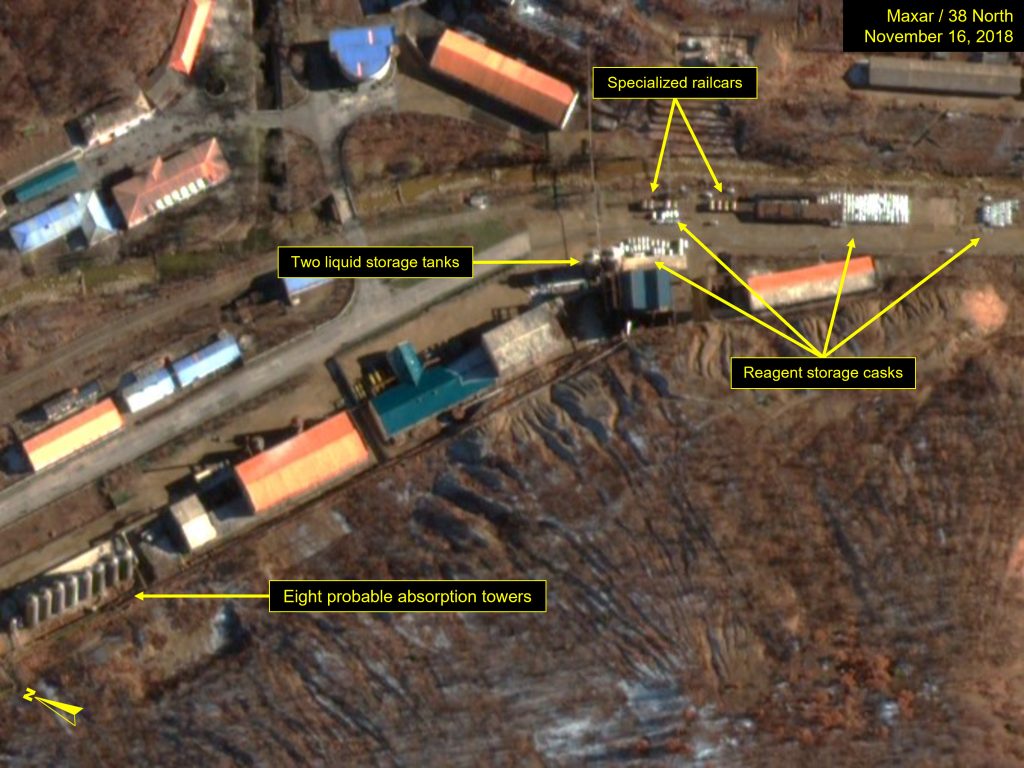
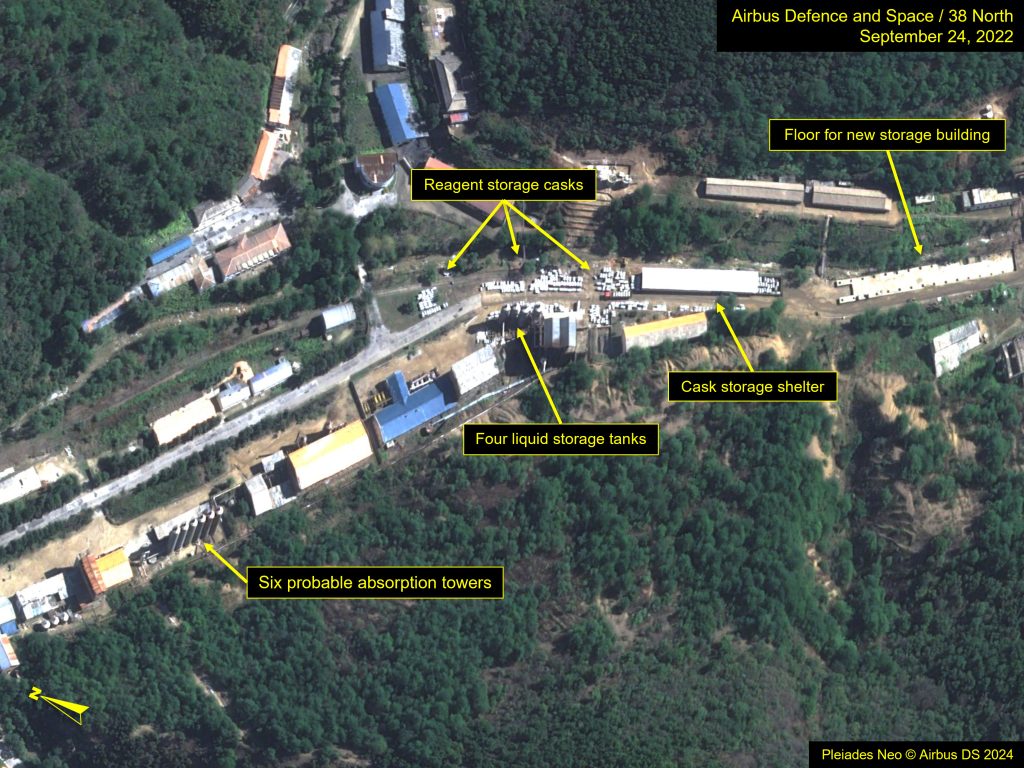
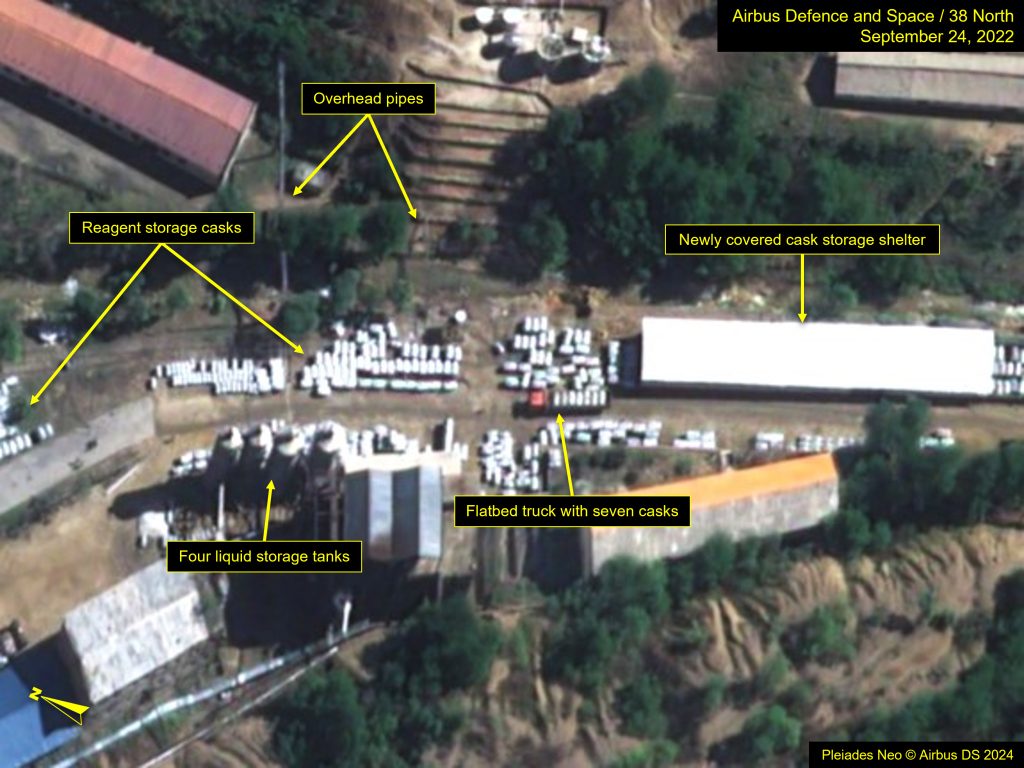
It is unclear whether the casks are filled with reagents awaiting transport or are empty containers in storage, but a fluctuation in their numbers bears monitoring.[3] Likewise, how the reagents are transferred to the railcars is also unclear. Whether the reagents are being transferred from the nearby casks into the railcars or from a filling station at that point is unknown, but an overhead pipe, originating from the mountainside to the east and possibly extending to the East Production Plant, terminates on the western side of the tracks near the four vertical tanks.
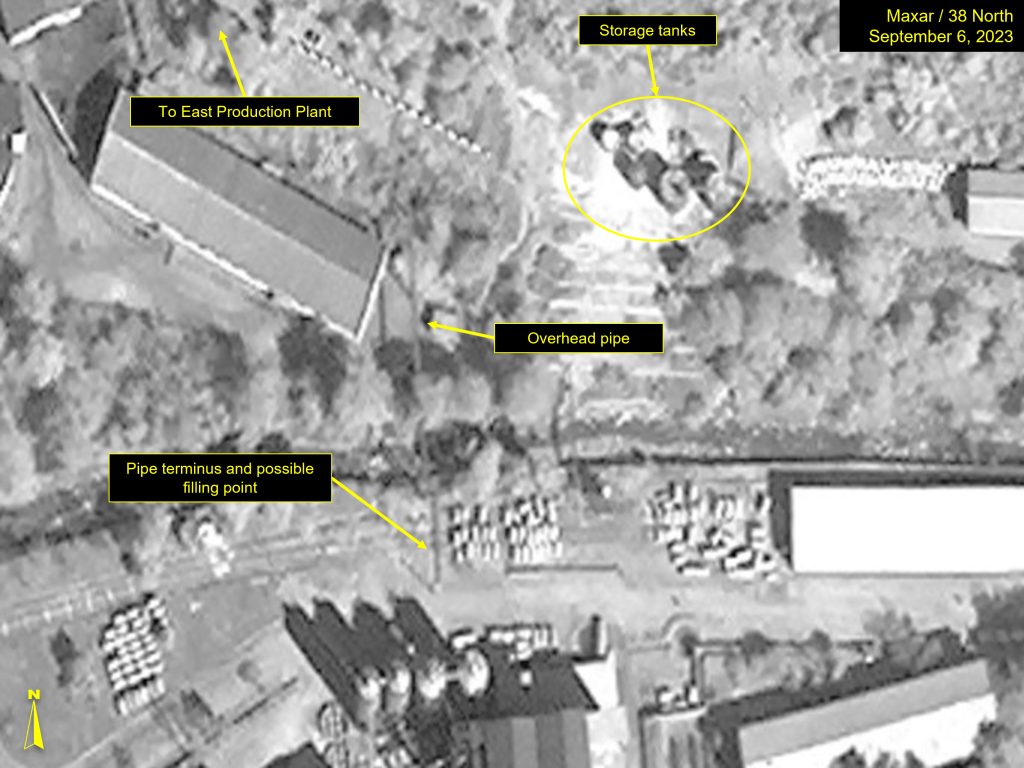
The presence of these three unique, specialized railcars has conclusively linked the Unha Chemical Complex to Yongbyon as the principal source of the reagents used in the processing of nuclear materials. However, an oddity occurred between 2018 and 2021 regarding the location of these railcars when at Manpho. Prior to 2021, these railcars had been observed either at Yongbyon or within the Unha Chemical Complex. But on April 4, 2021, they were observed parked at a platform located near the rail spur’s departure from the main tracks near the Amnokgang Tire Plant. This is also where all subsequent images capturing the presence of these specialized railcars have been observed while at Manpho. The small platform was added to this point by June 2020. There are no other facilities at the platform, but on July 3, 2023, a cargo truck carrying what appeared to be reagent casks was present, suggesting the platform is now being used as the transfer point.
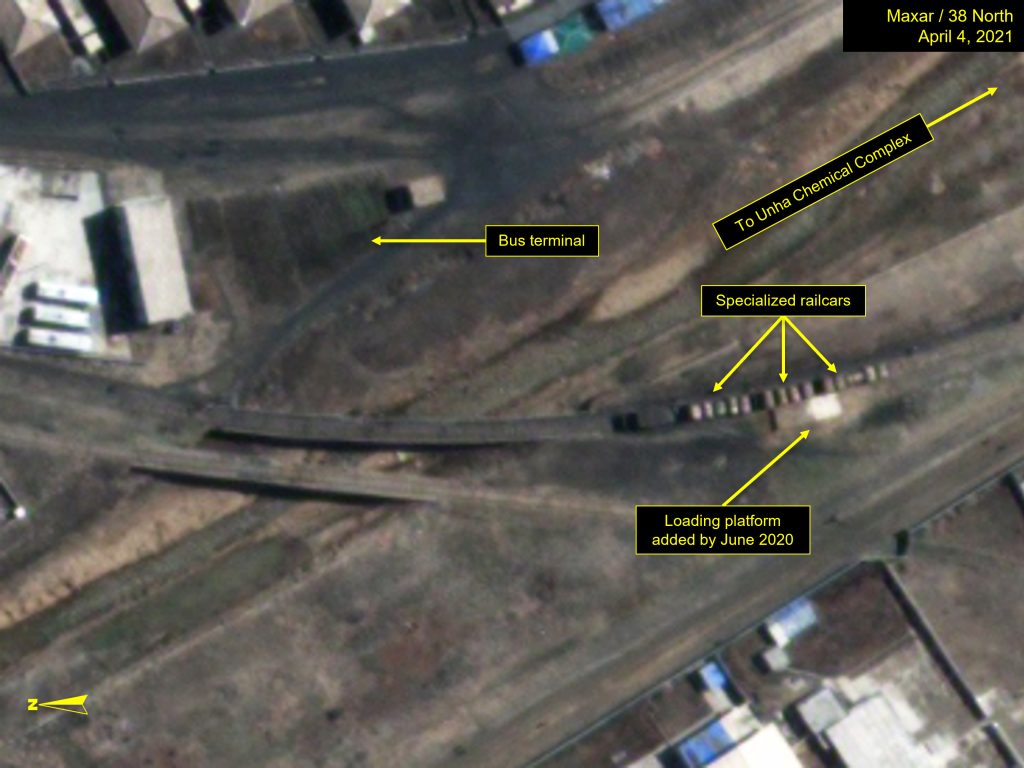
The review of numerous images taken from 2020 forward has revealed how flood waters have eroded the berm upon which the railroad track had been laid in several areas, either damaging the tracks or making their supporting surface unstable. Imagery from September 2023 revealed trucks and a bulldozer at work within the riverbed, suggesting restoration efforts are underway, which suggests this new transfer point is temporary.
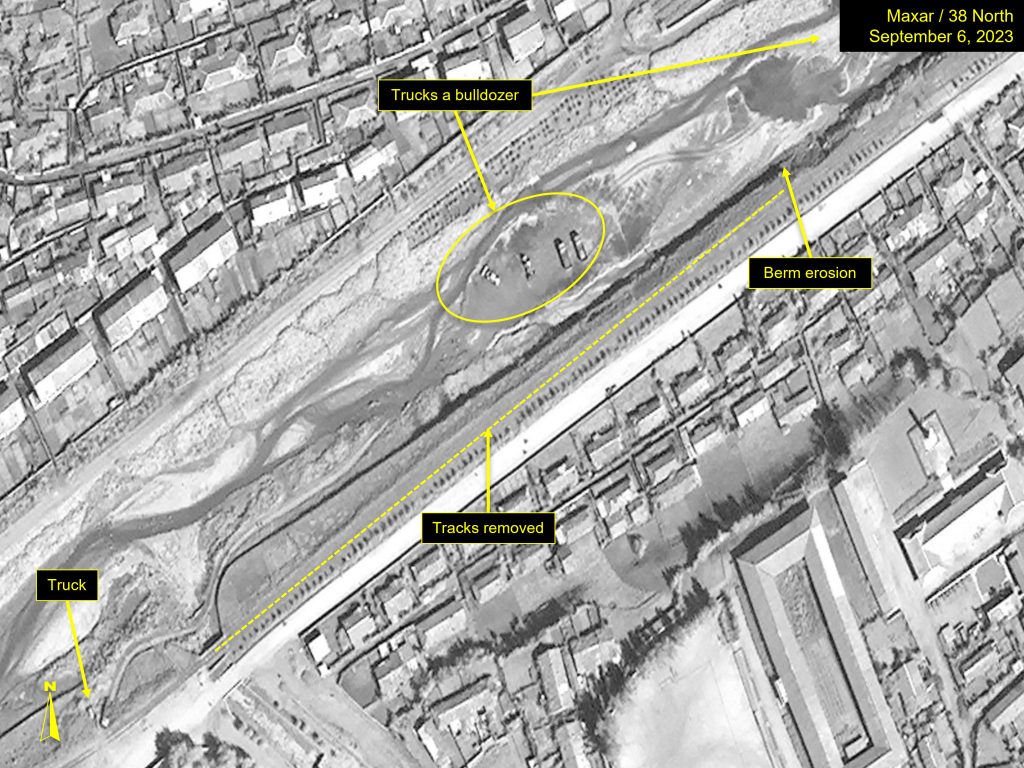
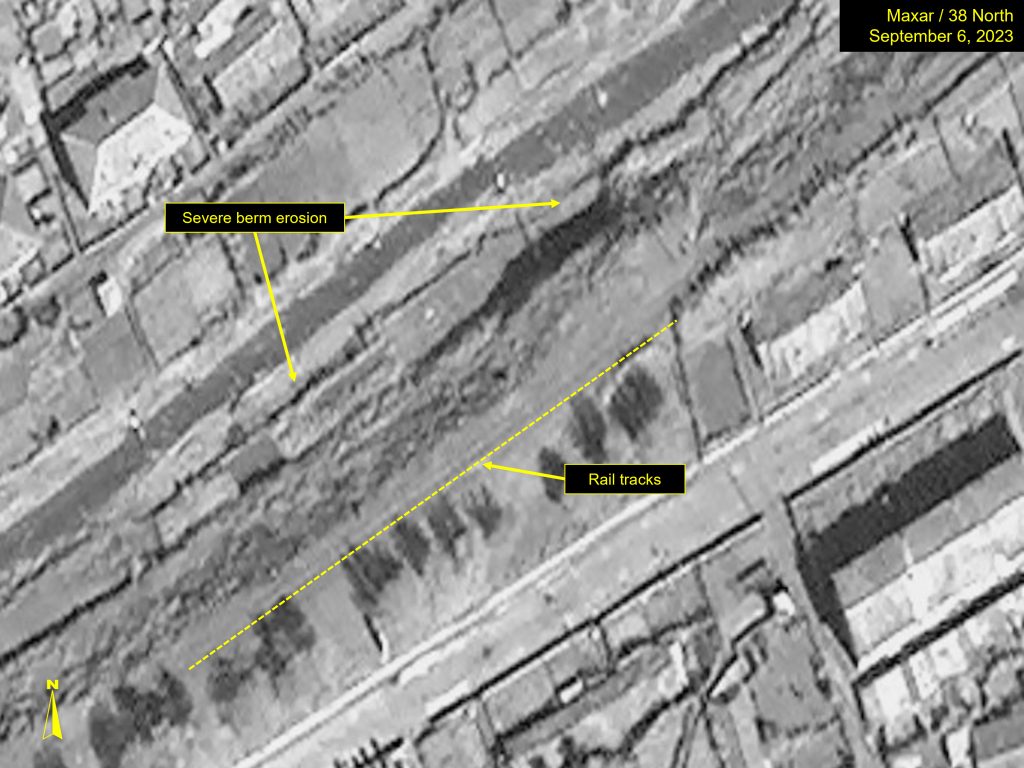
- [1]
- [2]
Central Intelligence Agency, Imagery Analysis Monthly Review, March 1980, https://www.cia.gov/readingroom/docs/CIA-RDP80T00913A000300530001-8.pdf.
- [3]
Imagery of the Spent Fuel Reception Building at Yongbyon’s Radiochemical Laboratory from September 29, 2019, showed dozens of white casks were present. While 38 North reported their presence, the similarities to the casks at Unha were not known. The rail spur servicing the RCL was torn up in the spring of 2019, although they may have been out of use much earlier, as the last known presence of the specialized railcars in this location was in 2016.
